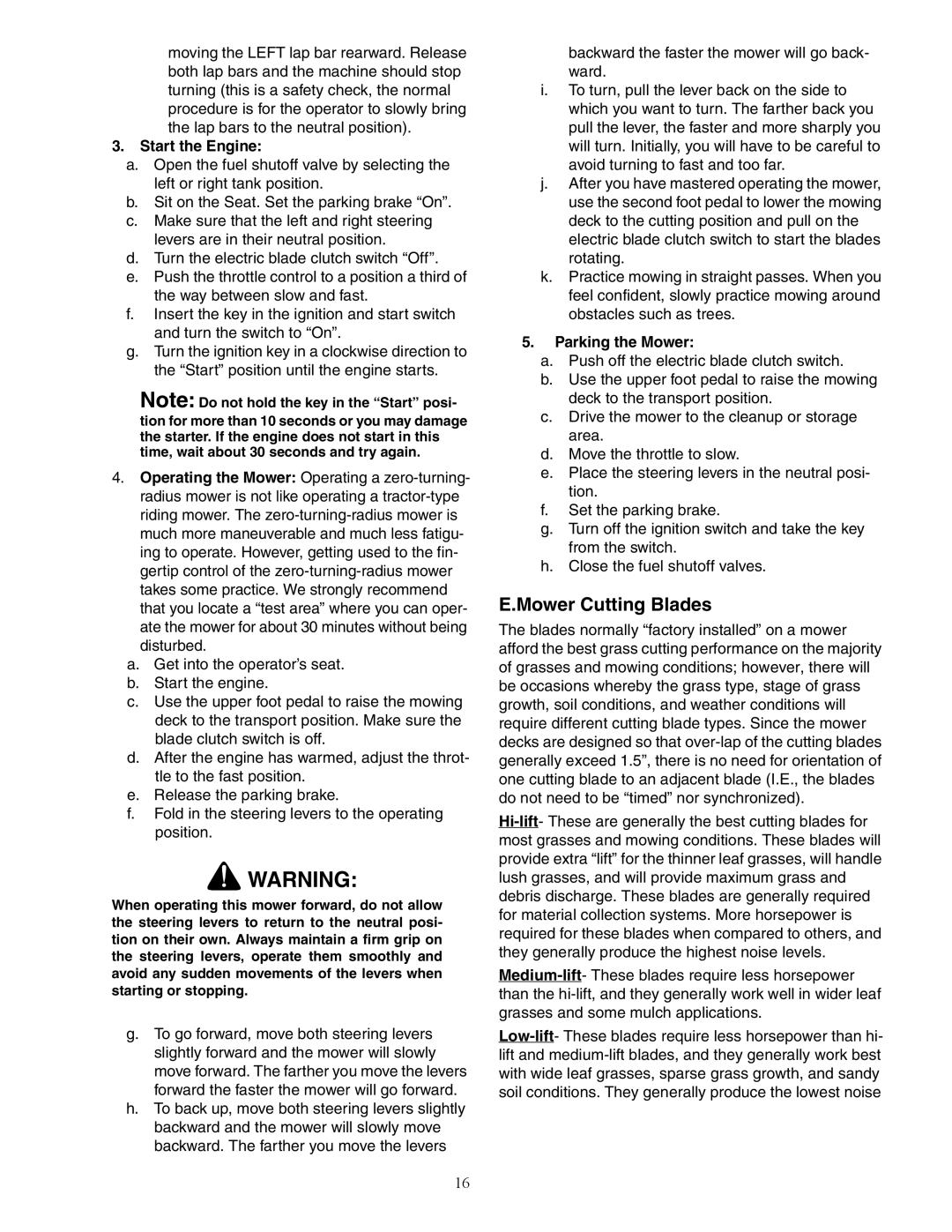53AJ8CT6050 specifications
The Cub Cadet 53AJ8CT6050 is a riding lawn mower that combines power, precision, and advanced technology to provide an exceptional mowing experience. Designed for homeowners who demand top performance and reliability, this model stands out in the competitive landscape of outdoor power equipment.One of the key features of the Cub Cadet 53AJ8CT6050 is its powerful engine. Equipped with a robust 18.5 horsepower Kohler engine, it delivers ample torque and speed to tackle a variety of terrains. This ensures a smooth mow even in challenging conditions, making it ideal for both flat lawns and hilly landscapes. The engine is paired with a smooth hydrostatic transmission, allowing for effortless gear changes without the need for shifting.
Another notable characteristic is its innovative cutting system. The mower features a 50-inch cutting deck, designed to cover more ground in less time. The deck's adjustable cutting height, ranging from 1.5 to 4 inches, allows users to customize their mowing experience, ensuring a pristine lawn regardless of grass type. The twin-blade design enhances the mowing efficiency, providing even cutting and superior grass mulching, which can help return vital nutrients back to the soil.
The Cub Cadet 53AJ8CT6050 also emphasizes user comfort and ease of operation. It features a plush, ergonomic operator station with a high-back seat and armrests, allowing for extended use without discomfort. The steering wheel's design enhances maneuverability, making it easier for operators to navigate tight spots and obstacles in their yard.
In terms of technology, the mower incorporates advanced features such as the SmartJet deck washing system, which allows for quick and hassle-free cleaning of the cutting deck after use. This not only maintains the mower's performance but also prolongs its lifespan by preventing grass buildup.
Additionally, the Cub Cadet 53AJ8CT6050 is compatible with a range of attachments, further enhancing its utility. Owners can add accessories such as baggers, carts, and plows, turning the mower into a versatile tool for various lawn and garden tasks.
Overall, the Cub Cadet 53AJ8CT6050 is a well-rounded riding mower that blends performance, comfort, and technology. Whether you have a small suburban lawn or a sprawling estate, this mower is equipped to meet your landscaping needs effectively. With its robust construction and thoughtful features, it's a reliable choice for discerning homeowners looking to invest in quality outdoor equipment.
